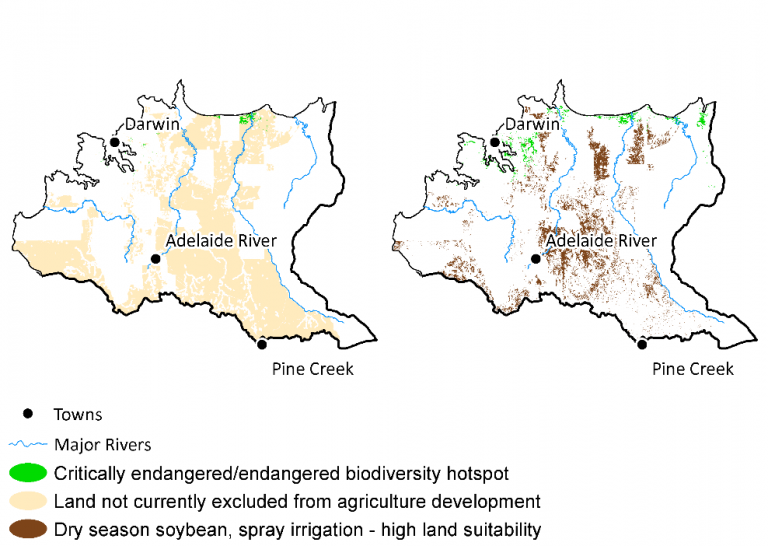
At the regional scale, in the Darwin study area (Agriculture and species of concern case study), agriculture development could co-exist with critically endangered or endangered, vulnerable, and near threatened taxa.
Within those areas nominally available for agricultural development, protecting those areas of high biodiversity concern (i.e. home to critically endangered, endangered, vulnerable or near threatened taxa) would still allow large areas of cropping to occur.
More care is required for the protection of critical weight range mammals than for some other groups of species when determining areas destined for agricultural development in the Darwin study area (Agriculture and species of concern case study). 'Critical weight range' refers to mammal species that weigh between 35 grams and 5.5 kilograms. They are of concern because they continue to decline across Australia but are still present in northern Australia.
Threatened species
Almost all of the 233,950 hectares suitable for soybean is outside the area of high biodiversity richness for critically endangered and endangered taxa, with only 172 hectares (0.07%) of overlap.
For vulnerable taxa and near threatened taxa there are 696 hectares (0.3%) and 4,690 hectares (2%) of overlap respectively.
The following maps show the relationship between biodiversity hotspots for critically endangered, endangered, vulnerable and near threatened taxa, and land of high suitability for dry season soybean using spray irrigation.
CWR mammals
More than one quarter of the land mapped as hotspots for critical weight range mammals (65,250 hectares) overlaps with land suitable for dry season soybean cropping under spray irrigation. However, about 169,000 hectares of land suitable for soybeans can be found outside these hotspots. It is worth noting that there is not enough water available to irrigate such a large area.
The following maps show the relationship between biodiversity hotspots for critical weight range (CWR) mammals and land of high suitability for dry season soybean using spray irrigation.







